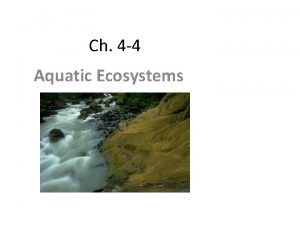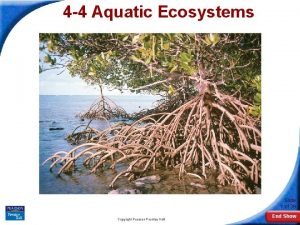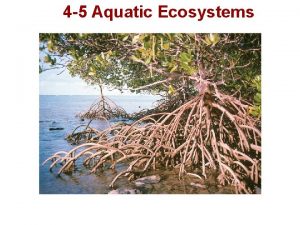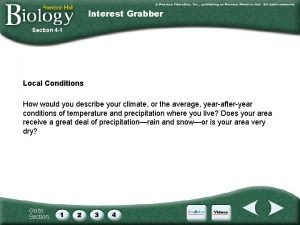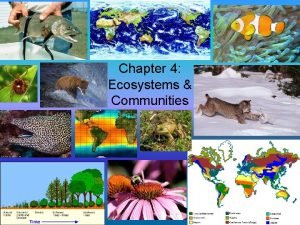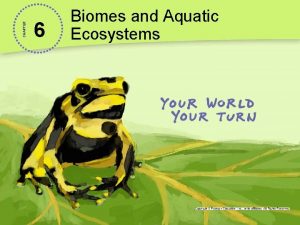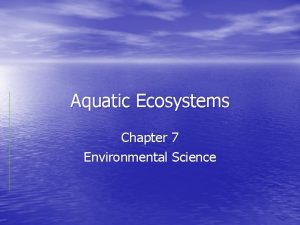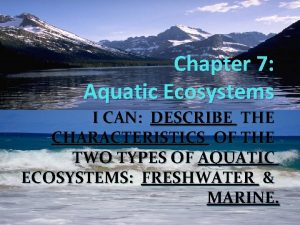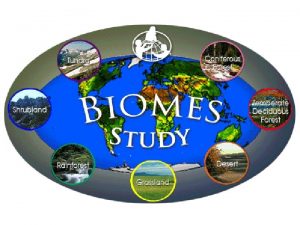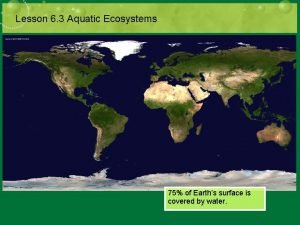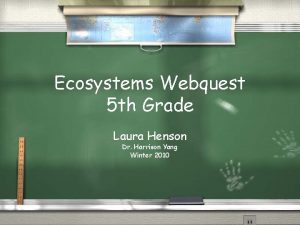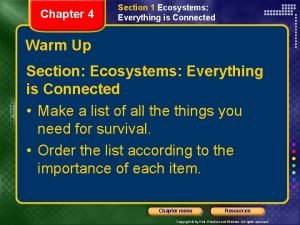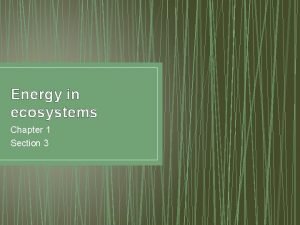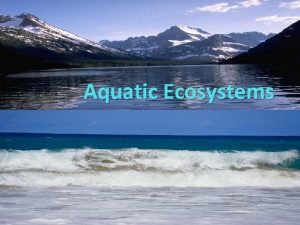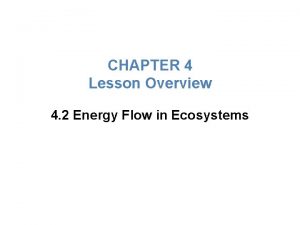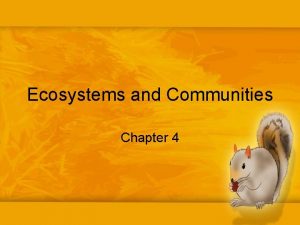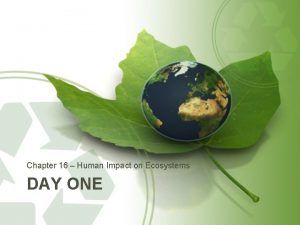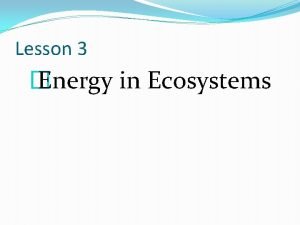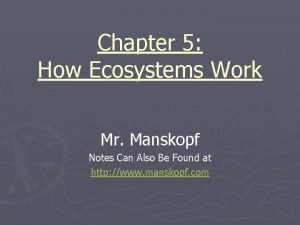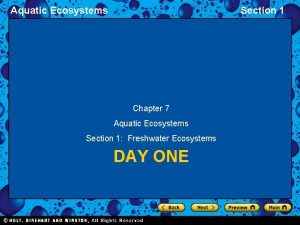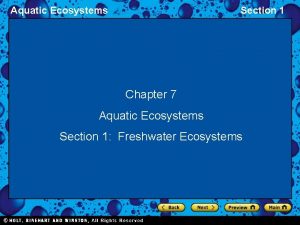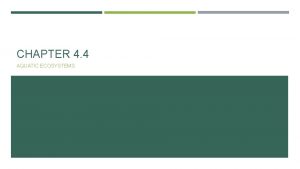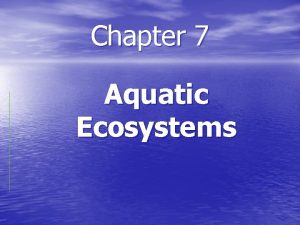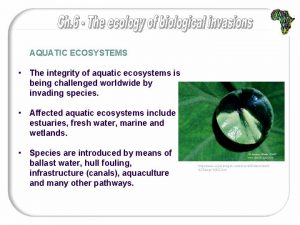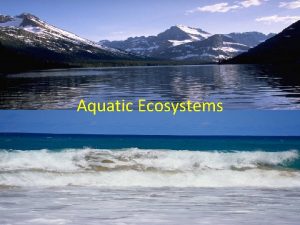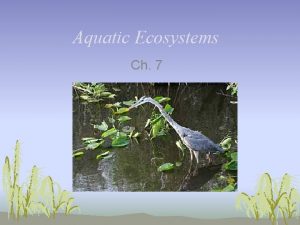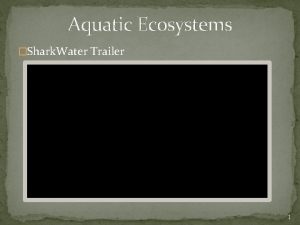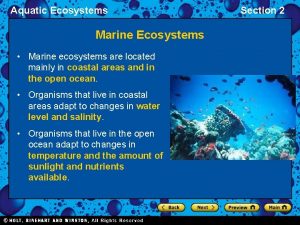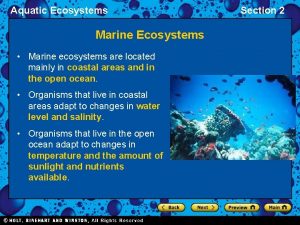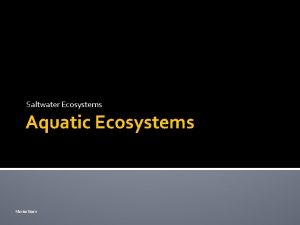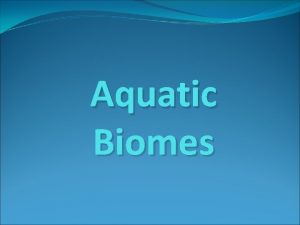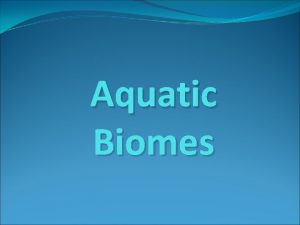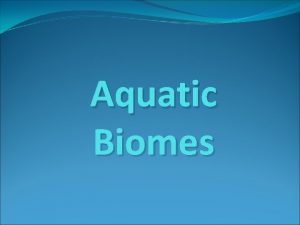Chapter 6 Ecosystems Section 3 Aquatic Ecosystems A































- Slides: 31

Chapter 6: Ecosystems Section 3: Aquatic Ecosystems

A. Freshwater ecosystems – include flowing and standing water, low or no salt 1. Rivers and streams – flowing water

a. Most nutrients washed into the water from land b. The faster the flow, the greater the oxygen content

2. Lakes and ponds – very little flow a. Sunlight warms and lights pond bottom, supporting plant and animal life


b. Deeper lakes support life along shallow shoreline or surface


3. Water pollution – a problem caused by fertilizer-filled runoff and sewage



4. Wetlands – regions wet all or most of the year a. Lie between solid land water b. Very fertile ecosystems



B. Salt water ecosystems – 95% of Earth’s water contains high concentration of salt, or high salinity

1. Open oceans – divided into lighted and dark life zones a. lighted – upper 200 m and home of plankton

b. dark – below 200 m where animals feed on material that floats down or prey on each other




2. Coral reefs diverse and fragile ecosystems formed from coral shells of calcium carbonate





3. Seashores – along coastlines a. Intertidal zone covered with water at high tide and exposed to air at low tide

b. Drastic changes in temperature, moisture, salinity, and wave action


4. Estuaries where a river meets an ocean; called bays, lagoons, harbors, inlets, sounds Elkhorn Slough, CA

a. Rich in nutrients b. Changing mixture of salt water and freshwater Healthy estuary – Chesapeake Bay (largest estuary in the US)


 Chapter 3 section 3 aquatic ecosystems
Chapter 3 section 3 aquatic ecosystems 4-4 aquatic ecosystems
4-4 aquatic ecosystems Section 4-4 aquatic ecosystems
Section 4-4 aquatic ecosystems 4-4 aquatic ecosystems
4-4 aquatic ecosystems Section 4-4 aquatic ecosystems
Section 4-4 aquatic ecosystems Section 4-4 aquatic ecosystems
Section 4-4 aquatic ecosystems Epiphytes plants
Epiphytes plants List few criteria used to classify aquatic biomes
List few criteria used to classify aquatic biomes Chapter 3 lesson 3 biomes and aquatic ecosystems
Chapter 3 lesson 3 biomes and aquatic ecosystems Limestone ridges built by tiny animals
Limestone ridges built by tiny animals Chapter 7 aquatic ecosystems test answers
Chapter 7 aquatic ecosystems test answers Lesson outline lesson 2 aquatic ecosystems answer key
Lesson outline lesson 2 aquatic ecosystems answer key What are the two main types of aquatic ecosystems
What are the two main types of aquatic ecosystems Aquatic vs terrestrial
Aquatic vs terrestrial What factors describe aquatic ecosystems
What factors describe aquatic ecosystems Biomes and aquatic ecosystems
Biomes and aquatic ecosystems Lesson 3: aquatic ecosystems
Lesson 3: aquatic ecosystems Ecosystems webquest
Ecosystems webquest Section 1 ecosystems everything is connected answer key
Section 1 ecosystems everything is connected answer key Section 3 energy in ecosystems
Section 3 energy in ecosystems Section 1 energy flow in ecosystems
Section 1 energy flow in ecosystems Section 1: freshwater ecosystems
Section 1: freshwater ecosystems Chapter 4 lesson 2 energy flow in ecosystems answer key
Chapter 4 lesson 2 energy flow in ecosystems answer key Ecosystems and communities chapter 4 answer key
Ecosystems and communities chapter 4 answer key Chapter 55 ecosystems and restoration ecology
Chapter 55 ecosystems and restoration ecology Chapter 42 ecosystems and energy
Chapter 42 ecosystems and energy Chapter 16 human impact on ecosystems
Chapter 16 human impact on ecosystems Which marine ecosystem contains the fewest producers
Which marine ecosystem contains the fewest producers Chapter 5 how ecosystems work study guide
Chapter 5 how ecosystems work study guide Chapter 16 human impact on ecosystems
Chapter 16 human impact on ecosystems Chapter 55 ecosystems and restoration ecology
Chapter 55 ecosystems and restoration ecology Chapter 14 interactions in ecosystems
Chapter 14 interactions in ecosystems

